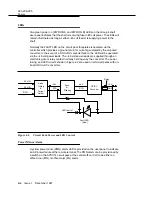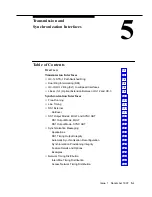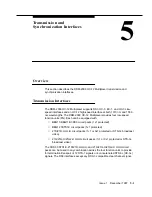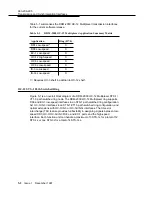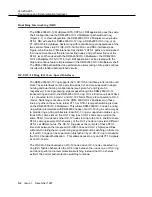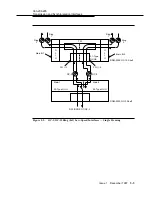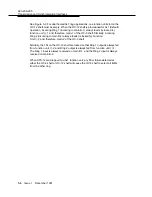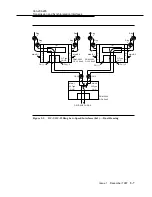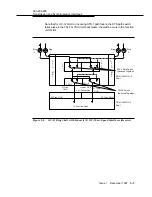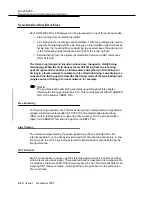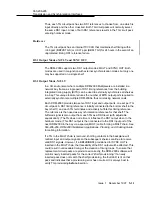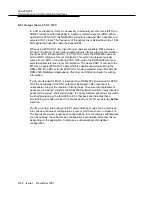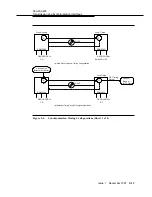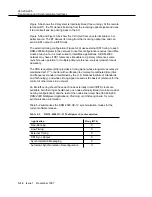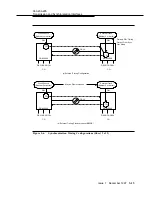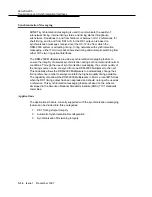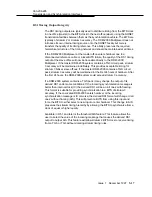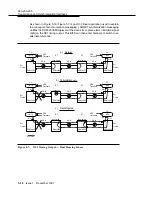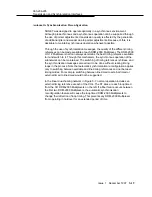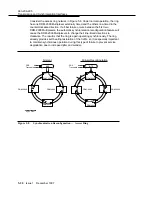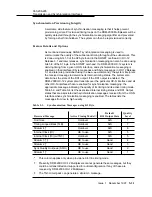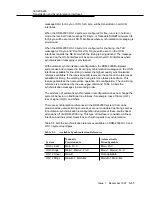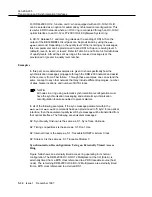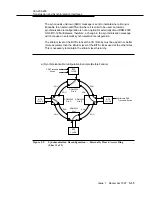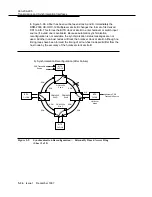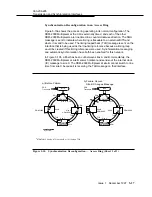
363-206-295
Transmission and Synchronization Interfaces
5-12
Issue 1
December 1997
DS1 Output Mode, SYNC OUT
5
In a CO environment, it may be necessary to externally synchronize a BITS to a
SONET reference with traceability to a primary reference source (PRS). When
optioned for SYNC OUT the DDM-2000 will output a derived DS1 traceable to a
selected OC-12 input. The frequency of the optical line is divided down to a 1.544
MHz signal and used to create the derived DS1.
When using SYNC OUT, two input timing modes are available: DS1 external-
timing or line-timing. These timing modes will only influence the synchronization
source used for the derived DS1. In SYNC OUT mode the DDM-2000 uses an
external DS1 reference for synchronization This external reference typically
comes from a BITS. In line-timing SYNC OUT mode, the DDM-2000 will use a
selected optical reference for synchronization. The derived DS1 is carried to the
BITS by a special SYNC OUT cable which is capable of externally timing the
DDM-2000 if the DS1 external SYNC OUT mode is selected. See 363-206-200,
DDM-2000 Multiplexer Applications, Planning, and Ordering Guide, for cabling
information.
If a TG provisioned for MULT is inserted into a DDM-2000 provisioned for SYNC
OUT the traceability of the DS1 output will be altered. This could result in
untraceable timing or the creation of timing loops. To ensure that replacement
packs are provisioned correctly, the DDM-2000 software monitors newly inserted
packs for the correct “shelf provisioning.” If a newly inserted pack does not match
the shelf provisioning, the fault LED is lit on that pack and indicates that a
provisioning error has occurred. It is always best to verify TG provisioning before
insertion.
The free-running, line-timing, and DS1 external timing modes can be combined
into various subnetwork configurations, some of which are shown in Figure 5-6.
The figures show basic single span configurations. In more complex subnetworks
such as hubbing, these basic span configurations are duplicated and/or mixed,
depending on the application, to produce a subnetwork synchronization
configuration.

